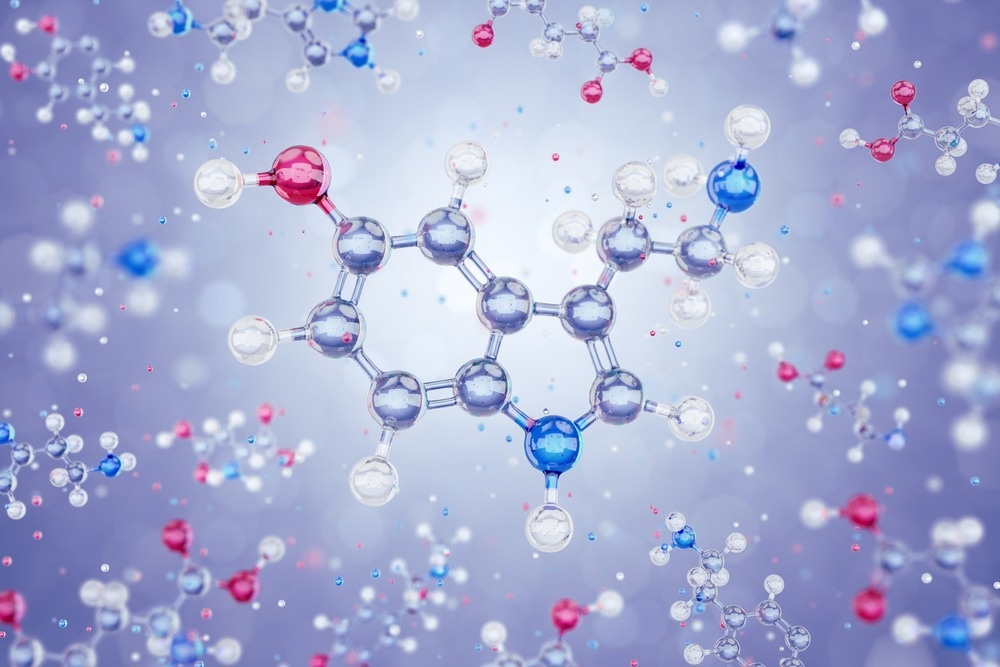The analysis of metabolites allows the understanding of the physiological, pathological, and biochemical status of a biological system. Metabolomics can provide insights into disease mechanisms and drug effects or help identify potential biomarkers. However, due to the complexity of biological samples, robust and reliable analytical techniques are needed.

Image Credit: Sergey Tarasov/Shutterstock.com
Gas chromatography-mass spectrometry is a powerful analytical technique widely used in metabolomics. With almost five decades of established protocols, it allows the identification and quantification of human metabolites with high sensitivity and specificity.
Introduction to Metabolites Analysis
Metabolites are small molecules that play a crucial role in maintaining human health and are involved in various biological processes. They are produced in the body by metabolic processes and have a relatively low molecular weight (<1000 Da). These compounds include alcohols, sugars, amino acids, fatty acids, etc.
Analyzing metabolites with metabolomics studies can help with understanding their relationship with physiological and pathological changes, elucidating the mechanisms of diseases, and identifying biomarkers for diagnosis and treatment.
Metabolomics relies on techniques commonly used in analytical chemistry, including nuclear magnetic resonance spectroscopy (NMR), liquid chromatography-mass spectrometry (LC-MS), and gas chromatography-mass spectrometry (GC-MS).
In particular, GC-MS is one of the most used techniques in metabolomics, thanks to its high sensitivity and specificity. It is able to detect metabolites at very low concentrations and discriminate between structurally similar compounds respectively.
GC-MS: A Precision Tool
GC-MS is ideal for analyzing metabolites. Firstly, the sample is vaporized into the gas phase. Its various components are then carried by an inert gas (i.e., helium or nitrogen) and separated depending on their boiling points and other physical properties by a capillary column coated with a stationary phase.
The metabolites are then ionized and separated in a mass spectrometer based on their mass-to-charge ratio. The ultimate result is a gas chromatogram where each peak has a unique mass spectrum used for compound identification.
The high reproducibility of the molecular fragmentation patterns makes GC-MS a very reliable tool in metabolomics. Thanks to the availability of large spectral libraries and standardized protocols, GC-MS has the capacity to resolve complex mixtures and identify up to 200 compounds per study in human body fluids samples.
Metabolomics and Health Insights
The analysis of metabolites has emerged as a powerful tool for understanding human health and disease. There are many examples where GC-MS-based metabolomics has been used to identify potential biomarkers for various diseases, including diabetes, Alzheimer's disease, and cancer.
Analyzing volatile organic compounds with a GC-MS metabolomics-based approach proved to be a valuable strategy for identifying biomarkers that may improve bladder cancer diagnosis. Another study involving 203 participants identified seven potential biomarkers for breast cancers, including cyclopentanone, ethylene carbonate, and phenol. The GC-MS analysis of exhaled breath revealed significant differences between breast cancer patients and healthy individuals.
The urinary metabolomics characteristics of patients with chronic hepatitis B were studied via GC-MS. When compared with normal individuals, twelve differential metabolites related to fatty acid, amino acid, bile acid, and intestinal microbial metabolic pathways were found. Similarly, it was observed that systemic lupus erythematosus is mainly related to energy metabolism and amino acid metabolism pathways.
GC-MS-based metabolomics can also provide insights into nutrition and drug metabolism. It has been used to study the effects of diet on human metabolism, identify drug metabolites, and understand their pharmacokinetics.
Challenges and Advances
Despite its many advantages, GC-MS-based metabolomics faces some underlying challenges linked to the complexity of biological samples. The presence of thousands of metabolites can make identifying and quantifying specific metabolites difficult, especially if found in very low concentrations.
This problem could be addressed by combining multiple extraction and separation methods. Due to its excellent ability to separate complex mixtures, two-dimensional gas chromatography is becoming popular in metabolomics.
High-throughput approaches such as untargeted metabolomics (where all measurable free low molecular weight metabolites are analyzed without specific targeting) and targeted metabolomics (focusing on defined subsets of relevant molecules) have also been developed to improve the identification and quantification of metabolites.
When compounds are not volatile, GC-MS requires sample processing and derivatization. Alkylation, acylation, and silylation can increase the volatility and thermal stability of the analytes. Methoximation and trimethylsilylation are common derivatization methods used in metabolomics studies with GC-MS. However, some metabolites may be subject to different derivatization efficiencies, which can affect the overall analysis's reproducibility.
In addition, continuous improvements in separation capabilities and sensitivity inevitably lead to very large amounts of data that need to be processed, which is another aspect that should not be underestimated.
Future Horizons
Advances in technology are expected to improve the sensitivity, specificity, and throughput of GC-MS-based metabolomics. Implementing multidimensional chromatography techniques with state-of-the-art separation capabilities should enhance metabolite investigation.
Besides instrumental challenges, further research is needed to translate metabolomics into routine medical practice and provide solutions for precision medicine. Improvements could lead to a more comprehensive understanding of drug safety evaluation and disease processes, transforming metabolite analysis via GC-MS into a powerful tool to guide human health.
Sources
- Ren, J. L., Zhang, A. H., Kong, L. & Wang, X. J. (2018). Advances in mass spectrometry-based metabolomics for investigation of metabolites. RSC Adv, 8, 22335-22350.10.1039/c8ra01574k. Available: https://www.ncbi.nlm.nih.gov/pubmed/35539746
- Zhang, Y., Guo, L., Qiu, Z., Lv, Y., Chen, G. & Li, E. (2020). Early diagnosis of breast cancer from exhaled breath by gas chromatography-mass spectrometry (GC/MS) analysis: A prospective cohort study. J Clin Lab Anal, 34, e23526.10.1002/jcla.23526. Available: https://www.ncbi.nlm.nih.gov/pubmed/33150682
- Yang, Q., Zhang, A. H., Miao, J. H., Sun, H., Han, Y., Yan, G. L., Wu, F. F. & Wang, X. J. (2019). Metabolomics biotechnology, applications, and future trends: a systematic review. RSC Adv, 9, 37245-37257.10.1039/c9ra06697g. Available: https://www.ncbi.nlm.nih.gov/pubmed/35542267
- Beale, D. J., Pinu, F. R., Kouremenos, K. A., Poojary, M. M., Narayana, V. K., Boughton, B. A., Kanojia, K., Dayalan, S., Jones, O. a. H. & Dias, D. A. (2018). Review of recent developments in GC-MS approaches to metabolomics-based research. Metabolomics, 14, 152.10.1007/s11306-018-1449-2. Available: https://www.ncbi.nlm.nih.gov/pubmed/30830421